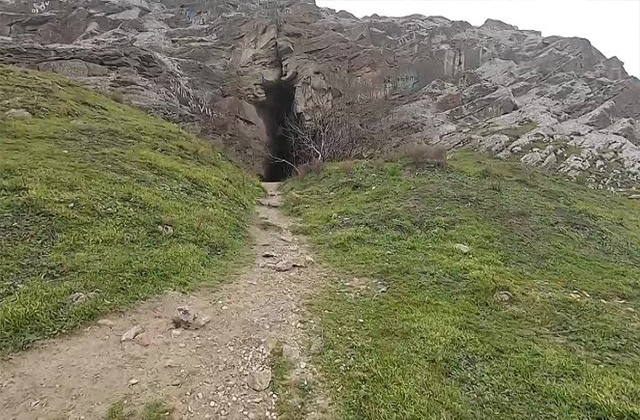By Samir Dubendi, Executive Director, AzETA.
It is old and eternally young! These words from the famous song of Muslim Magomaev are the best description of Baku city the capital of Azerbaijan.
Baku is a city with a rich history, unique cultural heritage, surviving great events of different times and, at the same time, a rapidly growing and developing modern metropolis.
Since ancient times, the city has been the cradle of humanity and in all periods of its history has been the object of interest of various historical figures. Places of primitive people, unique monuments of different religions from Zoroastrianism to Islam, footprints of legionnaires of Ancient Rome, charming natural landscapes, exquisite cuisine, a palette of carpets, a symbiosis of old and modern architectural ensembles, developed and modern tourist infrastructure is just a small part of the wealth and heritage that has great potential for the development of tourism in Baku.
Baku remembers the great men of its time and, at the same time, the positive and negative heroes of historical events of different years. Some were virtuous; others were full of sins and vices.
The extraordinary personality of Stepan Razin, which went down in history as a rebel and his famous campaigns to Persia and to the west coast of the Caspian Sea, did not bypass the city of Baku. The uprising under his leadership and, so-called, «The Hike for Zipuns» of 1667 led his brigand troop in the vicinity of Baku, where he allegedly in a cave on the mountain camped and made sudden raids on the surrounding villages. These raids brought so many misfortunes to the local population that they began to call Mount Sabanchi the Razin Mountain. The cave also received his name. Today it is the territory of the township named after Bakihanov, which is located 10 km from the center of the capital. On May 1, 1923, the first working settlement of Azneft was founded here, in the industrial zone of Baku, bearing the name of Razin until 1992.
In recent years, excursions for Russian tourists and guests from the CIS countries have increasingly begun to be conducted here, telling them stories about the secret passages and hidden treasures of the famous Cossack. It is worth noting that the mountain was and remains a favourite place for young people from mountaineering and climbing clubs, where they can conduct their training in all seasons without going far. The mountain offers beautiful views of the sea. The land is fertile and full of local flora.
The cave, width of entrance – 5 meters, height – 13,6 meters consists of two parts. The length of the first part – 38.4 meters, width – 5 meters, length of the second – 7.9 meters, width – 4.3-7 meters. The total area of the cave – 255.7 sq. meters. According to written sources, the cave has access to the sea by a branch of 2 km.
Over the years, the cave has become overgrown with different legends. It is said that in the Middle Ages, a stone wall was erected in front of the cave to protect from uninvited intruders and wild animals, which also indicates that the man used the place to live. The old-timers claim that the cave had two underground exits, one of which, as already noted, extends to the Caspian Sea and the other up to the Black Sea (!) and allegedly in one of them Razin hid the looted wealth.
This place is associated with another event in the history of the labor movement of Azerbaijan. On May 1, 1900, the first Mayovka was held here illegally, with the participation of social-democratic circles. Mayovkas were called collective forays into nature, supposedly with the aim of having a picnic. But in fact, without fear of other people’s eyes and ears to discuss all the pressing problems associated with the construction of a “bright future”, plan strikes and other cases. S. M. Kirov, who later became the head of the Central Committee of the Communist Party of Azerbaijan in 1921, took part in this event with a dozen of the first adherents. In Soviet times, May Day celebrations were held here, as well as educational excursions for schoolchildren.
Once it was planned to plant an olive grove here, then they talked about a cable car with an observation deck, but it never came to that.
Since the 90s, the mountain and the vicinity of the cave began to build up. And now it is no longer visible from the highway leading to the airport.
However, the mountain and the cave over the years turned into an abandoned state. Now there are heaps of rubbish, plastic bottles, the main entrance to the cave is cluttered with various rubbish, climbing equipment is outdated and does not meet any standards and is unsafe for use, there are many inscriptions on the mountain, in the style of “Sasha + Masha = Love”, “11B” and other things left by dashing visitors of a unique natural and historical monument.
At the beginning of 2020, activists of the Azerbaijan Ecotourism Association initiated the creation of Eco-Parks in Baku and began to study the territory of the city and its environs. Several abandoned but interesting sites were monitored. As a result of the research, it was decided to carry out an action to clean up and arrange Razin mountain, in order to draw attention of relevant structures to the site. As part of the implementation of this initiative, meetings were held with professional climbers, ecologists, tourism experts and government officials to identify various opportunities and draw up an action plan.
In particular, meetings were held with representatives of the Ministry of Ecology and Natural Resources of the Azerbaijan Republic, as well as a joint survey of the area around the Razin cave and mountain. As a result, we agreed that, first of all, the area should be cleared of accumulated debris, the entrance to the cave should be opened, and subsequently the deratization and disinfection of the site and the cave itself should be carried out, the obsolete climbing equipment should be replaced, the surface of the mountain should be cleaned of inscriptions, information boards and signs should be installed, to fence off the territory and create appropriate conditions for visiting tourists and young people who want to join mountaineering and rock climbing and, at the same time, open up opportunities for further exploration of the legendary cave by archaeologists, speleologists, historians and other interested institutions.
Immediately I would like to note that educating young people in a sports spirit, promoting an active and healthy lifestyle, creating opportunities for safe mountaineering, speleotourism, jogging over rough terrain, mastering the skills of hiking and trekking are also among the main opportunities of this site after its arrangement in proper order.
According to experts of the Azerbaijan EcoTourism Association, the Razin Mountain and Cave can subsequently be included in tourist routes around Baku as a natural and historical object. After all, its location lies on the route to such well-known and popular tourist sites as the State Historical and Architectural Reserve “Temple of Fire Worshipers” (Ateshgah), State Historical, Cultural and Natural Reserve “Yanar Dag”, State Historical and Ethnographic Museum ” Gala “, fortresses of Absheron villages, which creates the possibility of including this object in the Baku tourist cluster.
And now, a few days ago, due to the weakening of quarantine measures and the possibility of the resumption of activities in the open air, the activists of the Azerbaijani EcoTourism Association, together with the Ministry of Ecology and Natural Resources plans to implement previously drawn up action in the coming days.
Taking this opportunity we would like to call on all interested parties to support this action and to provide necessary assistance for the restoration of once popular object and we hope that this territory, half-forgotten by history, will regain its former glory.








